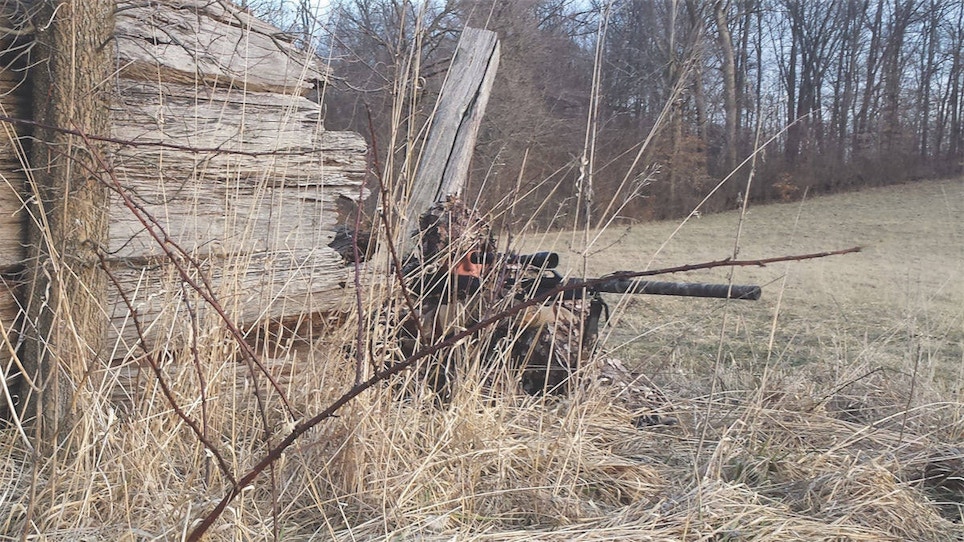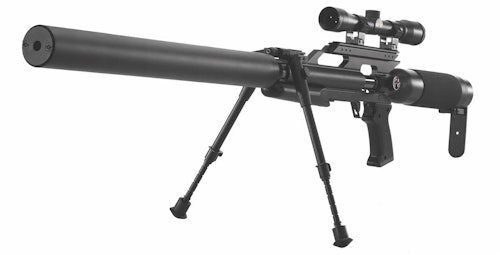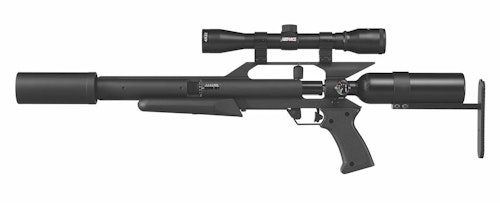Do not exceed 10 pumps. Those five warning words were commonly associated with pellet guns of the past and most likely ignored by the kids who had them.
Airguns have come a long way over the past couple decades as technological advancements have allowed easier firing, more powerful projectiles and a multitude of calibers outside the typical .177. The list of states permitting big-bore air rifles as a viable weapon to take big game is also steadily growing and companies like AirForce Airguns aim to provide reliable air rifles to fill that niche.
In a recent interview with Shooting Sports Retailer, AirForce Airguns founder John McCaslin highlighted some of the company’s history as well as a handful of proven rifle designs that have been known to take down game ranging in size from squirrels to red stag and even bison.
Q: Where did the AirForce Airguns story begin and how did the company get to its current place within the industry?
Auto-Numatic Corporation was incorporated in 1987 for the purpose of developing and marketing new airgun designs. The company was originally formed to develop and market BB machine guns, but in 1993, development switched to an innovative single-shot pellet gun design that we felt would appeal to a larger potential market. This was in collaboration with and at the behest of Geoff Darvill, who was our primary distributor in the UK at the time. The first batch of rifles was made for the UK market and branded as the GunPower Stealth. They were also configured for the UK by limiting them to 12 ft./lbs. of muzzle energy. About a year later in 1998, we began to see interest here in the United States for a high-quality, pre-charged pneumatic air rifle, so we did some slight design changes to offer the guns in the U.S. as the AirForce Talon. Being that there are not power restrictions for air rifles in the U.S., the Talon quickly became a favorite of small game hunters. Every model that we now offer all stemmed from that original Talon and has grown from the original .177 with 12 ft./lbs. of energy offering to our Texan line available in .50 and capable of producing over 800 ft./lbs.
Q: How has business and the industry changed recently and how has AirForce adapted to keep up with the changes?
The decision to mass produce components in quantities of 1,000 or more units at a time from the beginning helped achieve immediate scaled production. We knew from the word, “go” that we were going to have to be able to scale to meet demand. Right off the bat we invested in manufacturing techniques that allowed us to make our products efficiently, while not sacrificing quality or reliability. We have carried that same philosophy into our production lines today, even to the point of using equipment that has been custom configured for our purposes by the manufacturer.
While most companies are looking to China and Turkey to source guns and components and compete mainly on price, we take a performance-based approach focusing on power, accuracy and reliability. To achieve this, we focus on quality and innovative production techniques, choosing to produce most components in house rather than farm out our processes. When we do use an outside vendor, such as Lothar Walther, who we source barrels from, we make sure that we only work with those who have a similar philosophy of providing quality first.
Q: What’s the plan for the future of AirForce Airguns? What goals do you have for the rest of 2021 and beyond?
While we will launch some new AirForce designs soon, we are currently very focused on the ramp up of Rapid Air Weapons (RAW) and reintroducing some Theoben products. We have several design improvements in the works for RAW and Theoben that will advance the lines but maintain a high degree of back compatibility for the many hunters and competitive shooters who are already out there and very loyal to the brands.
Q: What have been some of your most popular products to date and what do you think is the reason behind their success?
For our AirForce line the Texan .50 CF has been our top-selling big bore. Its ability to produce over 800 ft./lbs., its lightweight design, and sheer reliability make it a favorite for hunters, so it has done very well as the big-bore airgun hunting community has grown by leaps and bounds here in the U.S. over the last six years.
For our small-bore utility guns, the Condor SS and the Talon P Carbine have been the big sellers. The Condor SS in .25 can produce over 100 ft./lbs. with the right projectile but can also be adjusted down via the power adjustment wheel and the use of our RingLoc valve kit so that it can be used for backyard plinking. The Talon P gives shooters a compact gun that can easily be transported when backpacking, camping, off-roading etc. for shooters who want to take an airgun with them on their adventures. Its lightweight design allows it to be used as both a carbine and pistol.
Q: Any new products in particular coming out that you are excited for?
We are very excited about acquiring the Theoben and RAW product lines. While new to us, these brands are recognized worldwide and allow us to market a fully refined, very reliable, extremely accurate, 35-year-old design in both repeater and single-shot variants.
Q: Airguns are often thought of as only small-caliber, small-game rifles. Can you talk about the growing market for larger-caliber airguns and their place in the industry today?
The AirForce Texan and Condor models have been our biggest sellers in the U.S. for some time. The Texan, being that it was really the first commercially viable big-bore air rifle, has taken the big game hunting market by storm. Since its introduction in 2015, it has become the most used big-bore air rifle in the world. We receive photos from all over the globe of people who have used it to harvest game successfully and ethically. We love getting those photos because every time one of our customers has a successful hunt with a rifle we made, it means we have done our job. Similarly, the Condor line has developed a following of its own. Shooters who love to tinker and mold their air rifle into the ultimate shooting machine have really found a love for the simple and rugged design. Its allowed garage airgun smiths all over the world to use the Condor as a canvas for all kinds of custom air rifle creations.
Q: What is special about AirForce Airguns that separate them from competitors?
Years of refinement. The original design was very different and innovative from the beginning and has changed little through the years. We have mainly made subtle changes to increase performance and reliability and continue to develop efficient in-house manufacturing processes to keep the prices competitive with foreign products.
We take the concept of single shot to an entirely different level. AirForce offers features like easily adjustable extremely high or very low power levels, easy caliber changes over a wide range, and the ability to accommodate very long or very short projectile lengths in any given caliber.
Q: What sort of expansion do you expect over the next few years?
We have been in our new production facility five years and it is three times bigger than the previous one. We have significant room for expansion now. With our current growth rate, we expect to triple the manufacturing space again within the next five years.








